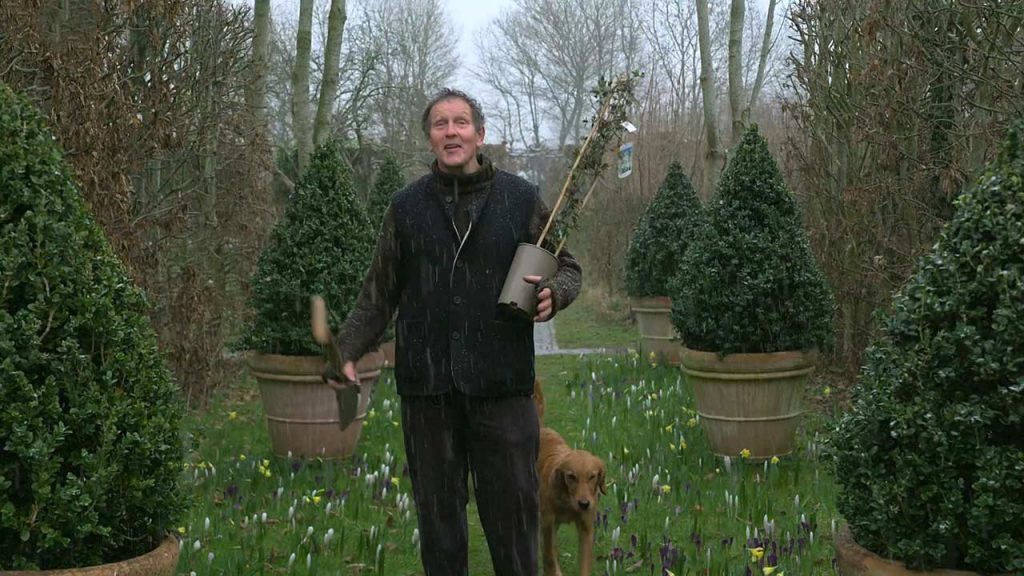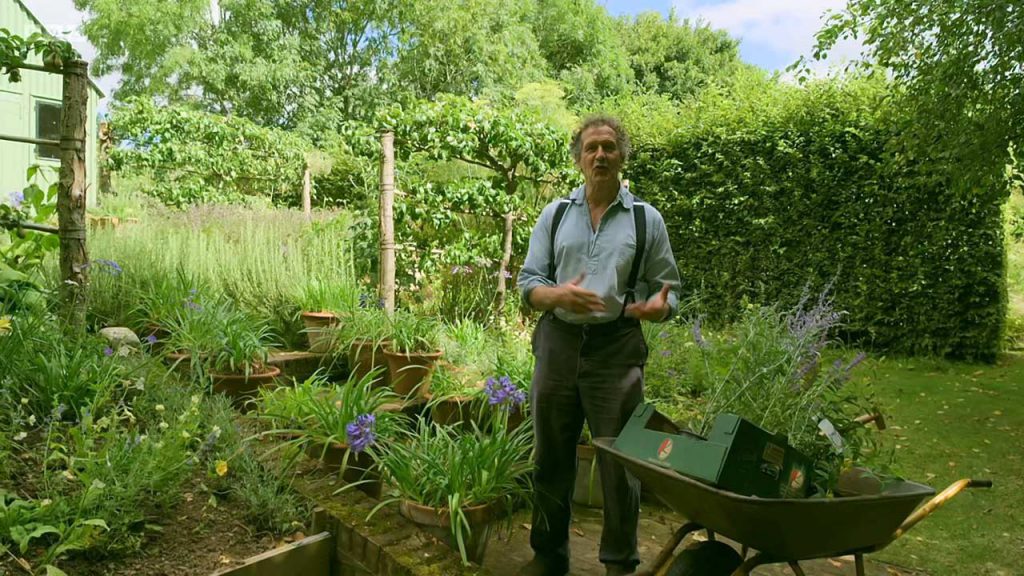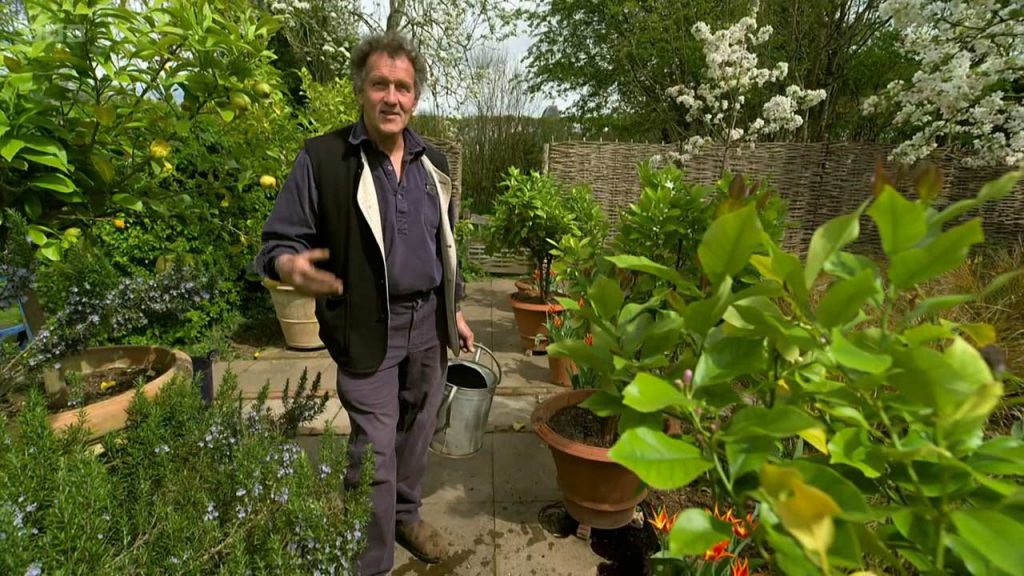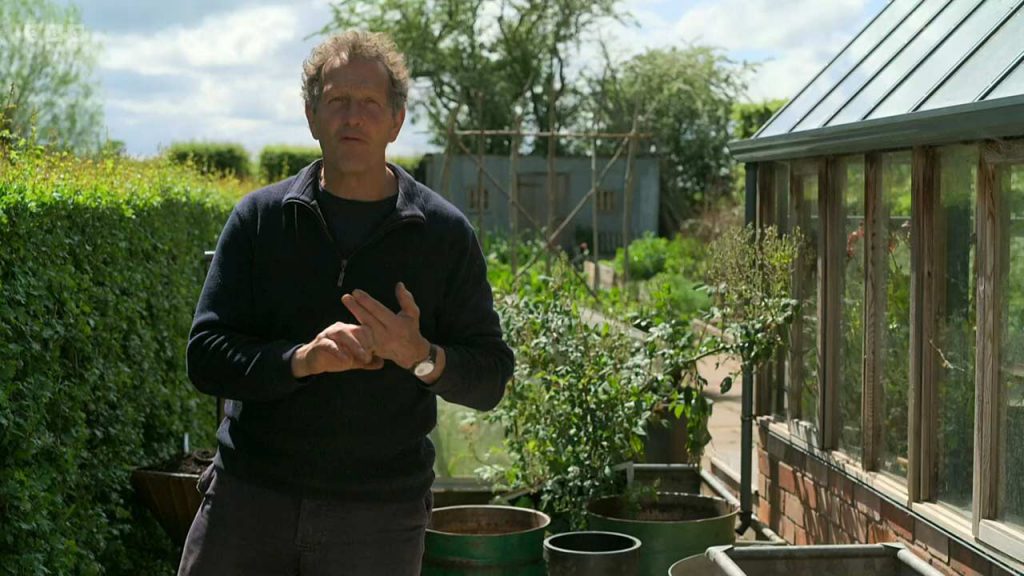Gardeners World 2023 episode 1: Monty and the team return with a celebration of spring. There’s been plenty going on over the winter and lots of new projects in the garden to share. As well as getting on with some essential rose pruning, Monty plants clematis and rocket, cuts back grasses and makes a start on sowing annuals for colour this summer. Carol Klein visits Colesbourne Gardens in Gloucestershire to revel in their vibrant displays of spring colour. There’s also a skateboarding gardener who has created a haven for wildlife – and herself – in her forest garden in Sheffield.
At RHS Hyde Hall in Essex, Adam Frost discovers which plants will be best suited to the changing climate. Also, there’s the remarkable story of a family who bought a botanic garden in Scotland on impulse, and more of the films that have been sent in by viewers.
Gardeners’ World is a long-running British gardening programme that started on 5 January 1968. It was described as “a weekly series for gardeners, advanced and beginners, throughout the British Isles”. It picked up where its forerunner – Gardening Club – left off, and also featured that programme’s much loved presenter, the knowledgeable and down-to-earth Percy Thrower. The programme covers various aspects of gardening, such as plants, wildlife, design, techniques, tips and advice. It also features visits to gardens around the country and interviews with experts and enthusiasts.
The current main presenter is Monty Don, who hosts the show from his own garden in Herefordshire. He is joined by other regular presenters such as Carol Klein, Adam Frost, Arit Anderson, Frances Tophill and Nick Bailey. Gardeners’ World is a popular and influential programme that celebrates the joy of gardening and inspires people to create beautiful and productive gardens of their own.
Gardeners World 2023 episode 1
Rose pruning
Pruning your roses is an essential part of keeping them healthy and promoting new growth and blooms. Here are some basic tips for pruning your roses:
- Timing: The best time to prune your roses is in late winter or early spring, just before new growth begins.
- Tools: Use a sharp pair of pruning shears, loppers, and gloves to protect your hands.
- Remove dead and diseased wood: Start by removing any dead or diseased wood. Cut back to healthy, green wood.
- Cut back old canes: Cut back any old canes, leaving only the healthiest and strongest ones. Make cuts just above a bud facing outward.
- Reduce the overall size: Cut back the remaining canes to about 1/3 to 1/2 of their original height. This will encourage new growth and blooms.
- Remove suckers: Suckers are shoots that grow from the base of the plant. Remove them completely as they will only weaken the main plant.
- Clean up: Finally, clean up any debris around the base of the plant and dispose of it properly.
Remember that pruning your roses is a process, and it may take a few years to perfect your technique. But with practice and patience, you can keep your roses healthy and looking their best.
Colesbourne Gardens – Gardeners World 2023 episode 1
Colesbourne Gardens is a beautiful estate located in the Cotswolds region of England, known for its collection of snowdrops and other winter-flowering plants. The estate covers over 10 acres of land and features a variety of gardens, woodlands, lakes, and historic buildings. The gardens are particularly renowned for their snowdrop displays, which start in late January and continue through February. Visitors can enjoy over 350 varieties of snowdrops, including some rare and unusual cultivars.
In addition to snowdrops, Colesbourne Gardens also boasts a variety of other winter-flowering plants, such as hellebores, cyclamen, and aconites. There are also woodland walks, a lake, and a walled garden to explore. The estate has a rich history, dating back to the 17th century. It has been owned by the same family for over 250 years, and the current owner has worked to restore and enhance the gardens over the past few decades.
Colesbourne Gardens is open to the public on select days during the snowdrop season, with proceeds from admissions going towards the upkeep and restoration of the gardens. It is a popular destination for garden enthusiasts, nature lovers, and anyone looking for a peaceful and beautiful escape in the English countryside.
RHS Hyde Hall
RHS Hyde Hall is a stunning garden located in Essex, England, and is one of the four gardens run by the Royal Horticultural Society (RHS). The garden covers over 360 acres of land and features a variety of gardens, woodlands, meadows, and lakes, offering visitors a unique and diverse horticultural experience.
The garden was established in 1955 and has since undergone significant development to become one of the most celebrated gardens in the UK. Its location on a hillside provides stunning views of the surrounding countryside, and visitors can explore a range of beautifully designed garden areas, including a rose garden, a Mediterranean-inspired garden, a woodland garden, and a vibrant herbaceous border. One of the highlights of RHS Hyde Hall is the Dry Garden, a pioneering garden that showcases plants that can survive with little to no watering. This garden is particularly inspiring for gardeners in areas with low rainfall, as it demonstrates how to create a beautiful and sustainable garden that is also water-wise.
RHS Hyde Hall also features a range of other amenities, including a gift shop, plant centre, and cafe. The garden hosts a variety of events throughout the year, including plant fairs, music concerts, and workshops. Visitors to RHS Hyde Hall can enjoy the garden year-round, with each season offering its own unique beauty and charm. The garden is an inspiring and educational destination for anyone interested in horticulture, gardening, or simply enjoying the natural beauty of the English countryside.
Growing potatoes
Potatoes are one of the most popular and versatile vegetables in the world, known for their nutritional value and wide range of uses in the culinary world. They are easy to grow and can be grown in various climates and soil conditions. In Gardeners’ World 2023 episode 1, we will discuss how to grow potatoes, from preparing the soil to harvesting and storing them.
Preparing the Soil:
Potatoes grow best in loose, well-drained soil with a pH level between 5.0 and 6.5. It is important to prepare the soil before planting by adding compost or aged manure to provide nutrients for the potatoes. If the soil is heavy and clayey, it may be necessary to add sand or perlite to improve drainage.
Planting:
Potatoes are typically planted in the early spring, as soon as the soil can be worked. The seed potatoes, which are small pieces of potato that have been allowed to sprout, should be planted 4-6 inches deep and 12-18 inches apart in rows that are 2-3 feet apart. It is important to plant the seed potatoes with the sprouts facing up to ensure they will grow properly.
Caring for the Plants:
Potatoes require consistent moisture, so it is important to water them regularly. It is also important to weed the area around the plants regularly to prevent competition for nutrients and sunlight. As the plants grow, it may be necessary to mound soil around the base of the plants to prevent the potatoes from being exposed to sunlight, which can cause them to turn green and become inedible.
Harvesting:
Potatoes are typically ready to harvest in the late summer or early fall, depending on the variety and climate. It is important to wait until the plants have died back before harvesting to ensure the potatoes have reached their full size. To harvest the potatoes, gently dig them up with a garden fork or shovel, being careful not to damage them in the process.
Storing:
Once the potatoes have been harvested, they should be allowed to dry in a cool, dry place for several days to cure. This will help to toughen the skin and prevent rotting during storage. Once the potatoes are dry, they can be stored in a cool, dark place for several months. It is important to store them in a location that is not too humid or too warm, as this can cause them to rot or sprout.
Tips and Tricks:
- When selecting seed potatoes, choose ones that are disease-free and have a high sprouting rate.
- Avoid planting potatoes in the same location for several years in a row, as this can lead to a buildup of disease in the soil.
- If you are short on space, potatoes can also be grown in containers, such as large pots or bags.
- If you are growing potatoes for the first time, consider starting with a small amount to get the hang of it before planting a larger crop.
In conclusion, growing potatoes is a rewarding and relatively easy endeavor for gardeners of all skill levels. With a little bit of preparation and care, you can enjoy a bountiful harvest of this delicious and versatile vegetable.




